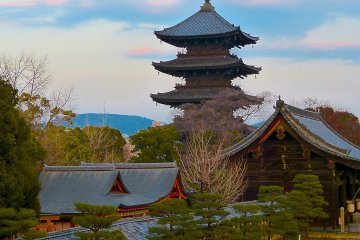
쿄토 토우지·5층탑
Tomoko Kamishima토우지의 오층탑은 아름다움과 강함을 겸비한 고층건축물이다. 그 완벽한 프로포션의 뒤편에는 현재의 고층빌딩에도 응용될 정도의 면진기술이 있다.

The Toji Temple is one of the original three Buddhist temples that were built in Kyoto at the beginning of the Heian period. In the year 796, the Toji Temple was built together with the Sai-ji and Shingon-in temples. Unfortunately, Toji Temple is the only one that has survived to this day.
The historic 5-story pagoda building is home to several significant artifacts and treasures, which resulted in Toji Temple being recognized as a UNESCO World Heritage Site.
About thirty years after the temple was built, Kobo Daishi, the founder of the Shingon sect of Japanese Buddhism, was appointed high priest of Toji, and the temple became one of the most important Shingon temples alongside the sect's headquarters on Mount Koya.
10-minute walk from To-ji Station on the Kintetsu Railway City Bus Stop To-ji-higashimon-mae 15-minute walk from JR Kyoto Station Hachijo-guchi exit

토우지의 오층탑은 아름다움과 강함을 겸비한 고층건축물이다. 그 완벽한 프로포션의 뒤편에는 현재의 고층빌딩에도 응용될 정도의 면진기술이 있다.
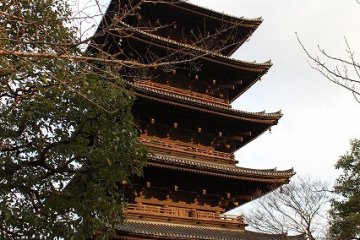
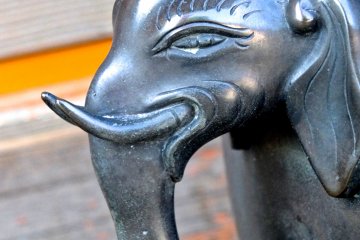
많은 절에서와 같이, 작은 세부 사항들은 놀라움과 기쁨을 준다. 여기서 나는 아름답고 작은 모래 정원과 멋진 조각상을 발견했다.그리고 코끼리도!


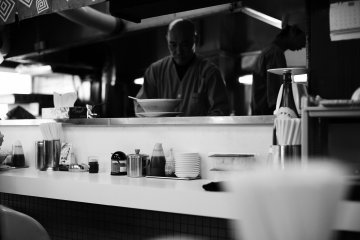
다이이치 아사히 라멘 (일본어 링크: http://www.honke-daiichiasahi.com/)은 교토역 근처에 있는 교토 스타일 라멘집이다. 이 식당은 평소보다 진한 쇼유 (소야)를 기반으로 한 국물로 잘 알려져 있다. 맛집이기 때문에 줄을 설 준비를 하셔야 할꺼다. 가격은 꽤 저렴하고, 이 집의 시그니쳐 라멘은 800엔 이다. 타카쿠라도리와 시오코지도리를 교차로 근처 교토역 북쪽으로 걸어오시면 5분 정도밖에 안 걸리고. 영업은 오전 5시부터 오전 2시까지 한다.
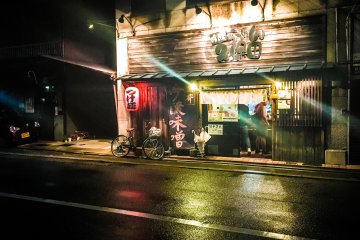
교토 시모교코에서 '긴조 라멘 쿠보타'에 대한 호평 리뷰를 읽은 후, 나는 이 정통적인 로컬 미소 전문 라멘 가게에 들러봐야겠다고 결심했다.
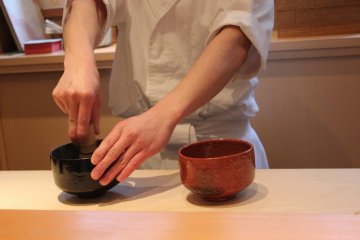
교요리(京料理),혹은 가이세키요리는 깔끔한 사계의 아름다움을 접시와 주발 속에 재현한 일본 음식이다. 다회는 차 뿐만이 아니라 술을 동반하는 식사도 함께 해 손님을 대접하지만, 그 깊은 대접의 의기가 이 "지키미야자와(じき宮ざわ)"에서는 느낄 수 있다.

Kyoto Aquarium is located on the edge of Umekoji Park near Kyoto Station. The aquarium features 9 zones including penguins, seals and dolphin shows.

The Kyoto Railway Museum opened to the public on April 29, 2016, and is an opportunity to experience Japan's progress in modernization through its railway history in the city of Kyoto, where tradition is both valued and innovation is sought to continue. The basic concept of the museum is to become the "" center of the railway culture that advances along with its community. As a holistic railway museum, a multitude of cultural activities are offered, which not only delight railway fans, but also help visitors to deepen their understanding of the railway. This includes the design of subject areas in which one can find out about the safety and technology of the railway. In addition, guided tours by the museum staff and workshops prepared by JR-West staff.

Nishi Hongan-ji is a large Buddhist temple west of Kyoto train station. Together with Higashi Hongan-ji, together with Nishi Hongan-ji, it is one of the two temple complexes of Shin Buddhism in Kyoto. It currently also serves as the main temple of the Jodo -Shin sect, one of the largest Buddhist sects in Japan with over 10,000 sub-temples across the country and 200 temples overseas. Built in 1591 by Toyotomi Hideyoshi, the building is a great example of the architecture of the Momoyama Period and the Early Edo Period. The two largest structures by Nishi Hongan-ji are the Goeido Hall, the largest wooden structure in Kyoto, and the Amidado Hall. Nishi Hongan-ji is also one of the 17 UNESCO World Heritage Sites in Kyoto. A small Japanese garden called Shoseien is a few blocks east of Higashi Hongan-ji. Nowadays the garden with its pond and the particularly beautiful autumn colors is open to the public.